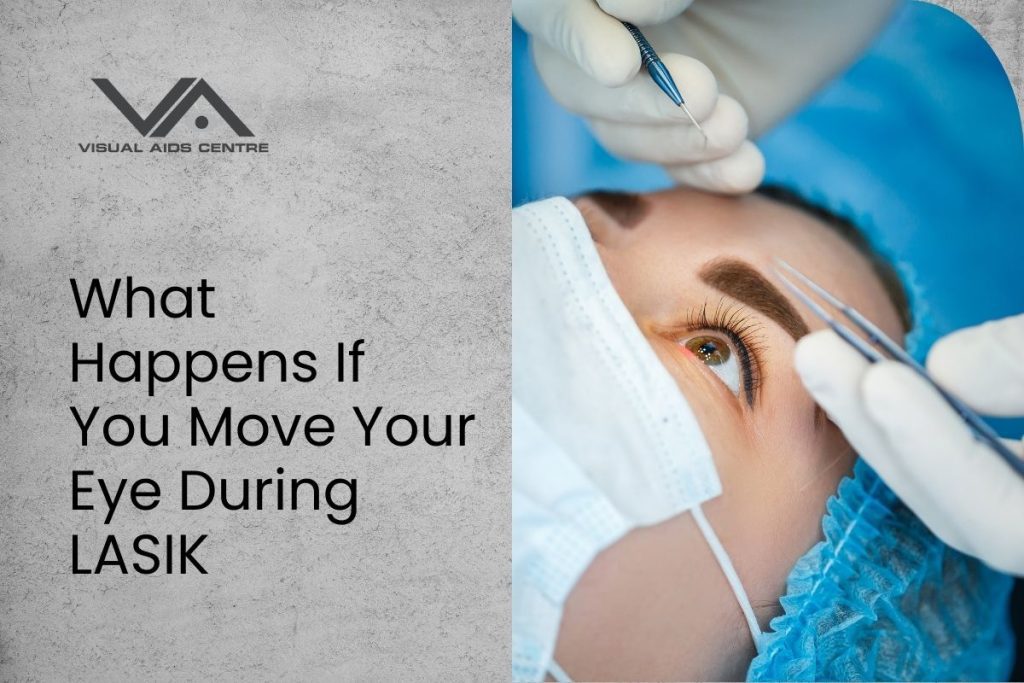Table of Contents
Toggle
It’s important to know what happens if you move your eye during LASIK. This surgery is popular, but many wonder about the risks. Luckily, new laser technology has made the surgery safer.
Modern lasers have special eye-tracking systems. These systems watch your eye and adjust as needed. So, even if you blink or move your eye a bit, the risk of problems is low.
While it’s key to keep your eyes steady, moving them a little won’t usually cause lasting harm. LASIK is generally safe, and serious damage from eye movement is rare.
Understanding the LASIK Procedure
LASIK eye surgery is a modern and effective way to fix vision problems. It’s important to know what LASIK is and how it works. The whole process takes about 20 minutes per eye, making it a fast and easy option. Before starting, patients get numbing drops to keep them comfortable. However, if you opt for SMILE PRO, then the treatment time is just 9 seconds per eye, making it an even quicker alternative.
The surgery begins with a suction ring to keep the eye steady. Then, a femtosecond laser makes a thin flap in the cornea. This flap is lifted to reach the corneal tissue underneath. There, an excimer laser reshapes the surface to fix vision issues like nearsightedness and astigmatism.
After reshaping, the flap is put back in place. It heals naturally without stitches. Knowing these steps helps patients understand the LASIK process. It shows how precise and advanced this technique is, leading to great results.
Consequences of Eye Movement During LASIK
Eye movement during LASIK can greatly affect the surgery’s precision. Older devices, lacking advanced tracking, were more at risk. Patients moving their eyes during surgery faced a higher chance of complications or less-than-ideal results.
Today’s LASIK uses advanced eye-tracking systems to monitor eye position. These systems make quick adjustments to counteract eye movement. Even small movements like sneezing or blinking are caught and managed. If unexpected motion happens, the laser stops the procedure to keep it safe and on track.
These modern systems allow lasers to track the eye’s position thousands of times per second. This high accuracy greatly lowers the risk of problems caused by eye movement. It makes LASIK more effective and improves patient results.
Safety Measures to Prevent Eye Movement
Keeping the eyes steady during LASIK is key to a successful surgery. Several steps are taken to prevent eye movement. A lid speculum is used to keep the eyes open. Before starting, numbing drops are applied to prevent any discomfort.
Modern LASIK uses advanced tracking technology. This technology continuously monitors eye movements and makes immediate adjustments to the laser as needed. Surgeons also help by giving clear instructions and reassurance. This helps patients stay calm and focused, reducing the risk of unwanted eye movements.
Recovery After LASIK Surgery
After LASIK, patients usually feel better quickly. They might feel some discomfort, see things blurry, or notice redness. These feelings usually go away in a few hours to days.
It’s important to rest your eyes and avoid hard work for a few days after surgery. This helps your eyes heal faster.
Looking after your eyes after LASIK is key to healing well. You’ll need to see your eye doctor for check-ups. This helps make sure everything is healing right.
Many people start seeing better in just 24 hours. This makes it easier to get back to normal life. Always follow what your doctor tells you to do to help your eyes heal right.
Conclusion: Ensuring a Successful LASIK Experience
When considering LASIK eye surgery, knowing about eye movement during the procedure is key. New laser technology helps manage eye movement, improving LASIK results. Advanced tracking systems keep up with the eye’s movement, lowering risks.
For a good LASIK experience, learn about the whole process. Follow pre-op and post-op advice closely. Talking openly with your surgeon helps too. This way, you can enjoy the benefits of LASIK fully.
In summary, LASIK is a good choice for those wanting better vision. By understanding the process and taking the right steps, you can have a successful LASIK. This means saying goodbye to glasses or contacts.
